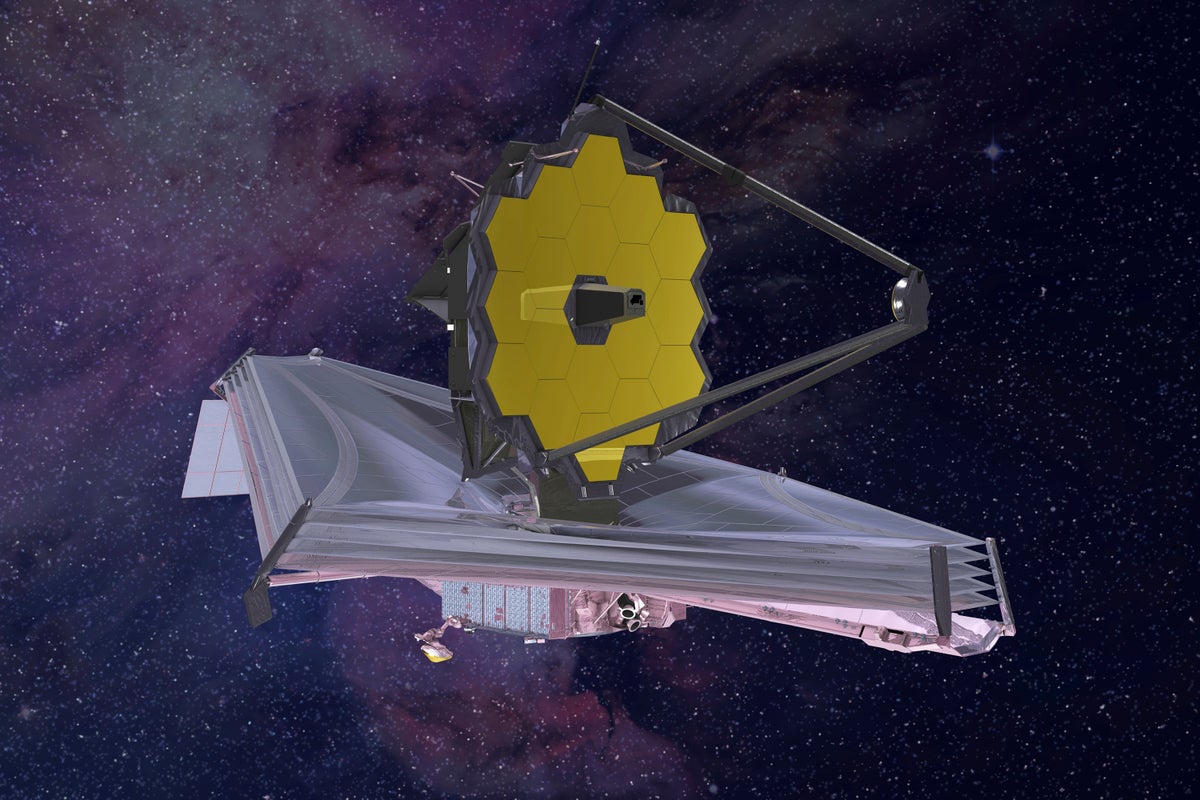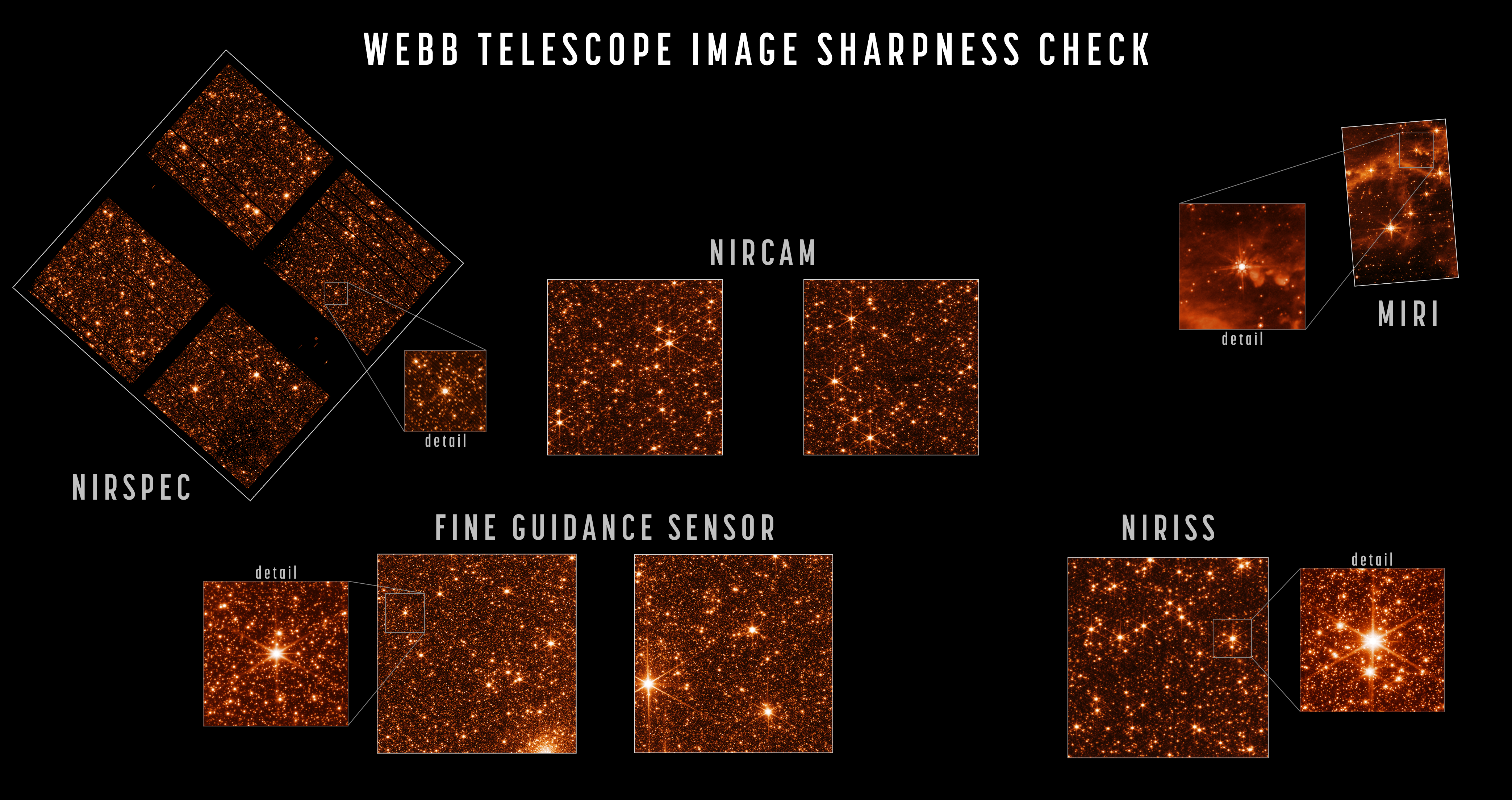
The James Webb Space Telescope’s Alignment Is Officially Complete
Believe it or not, it has already been almost half a year since the James Webb Space Telescope was launched in late 2021. Since then the next generation infrared telescope has been staying very busy. It began with hundreds of different deployments on the journey to L2. It then began the detailed phase of alignment to ensure the telescope could look into the past of the Universe and discover incredible things.
Now in early May, the James Webb Space Telescope has officially completed alignment and is getting extremely close to being fully operational. Just a few days ago in late April, NASA announced the exciting milestone that Webb had just reached. It has been a long time coming but has shown the determination of NASA and everyone involved with this ambitious project.
While the JWST is making impressive progress, it still has work to do prior to consistent science operations. As of right now, the Webb team will turn its attention to the commissioning of each of the science instruments onboard the telescope. Here I will go more in-depth into the recent milestone, what it means, the future of Webb, and more.
Alignment Milestone

If you have been keeping up with Webb’s progress over the past few months, you would know the telescope has been getting close to finishing alignment. In late April this became a reality. Specifically, on April 28th, NASA tweeted saying, “It’s full of stars! This mosaic represents a sparkling turning point as we #UnfoldTheUniverse. #NASAWebb’s mirrors are now fully aligned! Next is instrument calibration, the final phase before Webb is ready for science: What do we see here?” This tweet included an image mosaic of multiple high-quality images Webb had taken including NIRSPEC, NIRCAM, MIRI, and more. In terms of the specific details of this milestone, it’s official that the Alignment of NASA’s James Webb Space Telescope is now complete. After a full review, the observatory has been confirmed to be capable of capturing crisp, well-focused images with each of its four powerful onboard science instruments. Upon completing the seventh and final stage of telescope alignment, the team held a set of key decision meetings and unanimously agreed that Webb is ready to move forward into its next and final series of preparations. This seventh stage of alignment that was just completed is referred to as the Iterate Alignment for Final Correction stage. Here, after applying the Field of View correction, the key thing left to address is the removal of any small, residual positioning errors in the primary mirror segments. NASA measures and makes corrections using the Fine Phasing process. They then do a final check of the image quality across each of the science instruments; once this is verified, the wavefront sensing and controls process will be complete.
The alignment of the telescope across all of Webb’s instruments can be seen in a series of images that captures the observatory’s full field of view. “These remarkable test images from a successfully aligned telescope demonstrate what people across countries and continents can achieve when there is a bold scientific vision to explore the universe,” said Lee Feinberg, Webb optical telescope element manager at NASA’s Goddard Space Flight Center. The optical performance of the telescope continues to be better than the engineering team’s most optimistic predictions. Webb’s mirrors are now directing fully focused light collected from space down into each instrument, and each instrument is successfully capturing images with the light being delivered to them. The image quality delivered to all instruments is “diffraction-limited,” meaning that the fineness of detail that can be seen is as good as physically possible given the size of the telescope. From this point forward the only changes to the mirrors will be very small, periodic adjustments to the primary mirror segments. “With the completion of telescope alignment and half a lifetime’s worth of effort, my role on the James Webb Space Telescope mission has come to an end,” said Scott Acton, Webb wavefront sensing and controls scientist, Ball Aerospace. “These images have profoundly changed the way I see the universe. We are surrounded by a symphony of creation; there are galaxies everywhere! It is my hope that everyone in the world can see them.”
Specifically, engineering images of sharply focused stars in the field of view of each instrument demonstrate that the telescope is fully aligned and in focus. For this test, Webb pointed at part of the Large Magellanic Cloud, a small satellite galaxy of the Milky Way, providing a dense field of hundreds of thousands of stars across all the observatory’s sensors. The sizes and positions of the images shown here depict the relative arrangement of each of Webb’s instruments in the telescope’s focal plane, each pointing at a slightly offset part of the sky relative to one another. Webb’s three imaging instruments are NIRCam (images shown here at a wavelength of 2 microns), NIRISS (image shown here at 1.5 microns), and MIRI (shown at 7.7 microns, a longer wavelength revealing emission from interstellar clouds as well as starlight). NIRSpec is a spectrograph rather than imager but can take images, such as the 1.1 micron image shown here, for calibrations and target acquisition. The dark regions visible in parts of the NIRSpec data are due to structures of its microshutter array, which has several hundred thousand controllable shutters that can be opened or shut to select which light is sent into the spectrograph. Lastly, Webb’s Fine Guidance Sensor tracks guide stars to point the observatory accurately and precisely; its two sensors are not generally used for scientific imaging but can take calibration images such as those shown here. This image data is used not just to assess image sharpness but also to precisely measure and calibrate subtle image distortions and alignments between sensors as part of Webb’s overall instrument calibration process. These tests were considered a massive success and an immense milestone for the James Webb Space Telescope.
Future of Webb

Now that we know some of the recent progress Webb has made, we can take a closer look at what to expect in the near future. NASA highlights that now the Webb team will turn its attention to science instrument commissioning. Each instrument is a highly sophisticated set of detectors equipped with unique lenses, masks, filters, and customized equipment that helps it perform the science it was designed to achieve. These instruments include the Near-Infrared Camera, Near-Infrared Spectrograph, Mid-Infrared Instrument, and the Fine Guidance Sensor. All of which are complex and vital parts of Webb that need to be perfect. The specialized characteristics of these instruments will be configured and operated in various combinations during the instrument commissioning phase to fully confirm their readiness for science. With the formal conclusion of telescope alignment, key personnel involved with the commissioning of each instrument have arrived at the Mission Operations Center at the Space Telescope Science Institute in Baltimore, and some personnel involved with telescope alignment have concluded their duties. Not only this but some telescope calibration activities remain. As part of scientific instrument commissioning, the telescope will be commanded to point to different areas in the sky where the total amount of solar radiation hitting the observatory will vary to confirm thermal stability when changing targets. Furthermore, ongoing maintenance observations every two days will monitor the mirror alignment and, when needed, apply corrections to keep the mirrors in their aligned locations. NASA is confident that the general science instrument commissioning step that they are beginning to work on will not take too long. In fact, they believe this process will take about two months before scientific operations begin in the summer. This means we are only a few months away from receiving consistent one-of-a-kind images from the JWST. Over the past few months, Webb has not only completed its many steps and stages but done it better than expected. We can hope this pattern continues as it works on its final tasks prior to being fully operational. In each update, NASA scientists and engineers express how the results are so much better than expected. This is very promising information that will likely apply to the rest of Webb’s life.
Conclusion
Almost half a year ago the James Webb Space Telescope was launched into space. Over the next few weeks, it went through a very complicated deployment process where nothing could go wrong. It continued on its long journey before successfully reaching L2. Over the past few months, Webb has been working to align its primary mirror along with other vital instruments. Now in early May NASA has recently announced the next-generation telescope has completed alignment. This is a massive milestone as the JWST moves on to the next step. Here the telescope will work on its final series of preparations before scientific operations begin this summer. We will have to wait and see how it progresses and the impact it has on the space industry.
